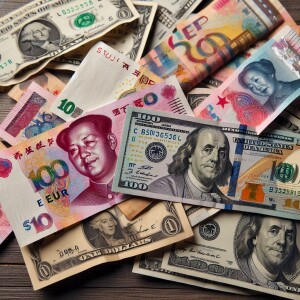
Wednesday Apr 02, 2025
Understanding US Tariffs Policy & Laws - Past Present and Future EP24
Understanding Tariffs, US Tariffs, and Their Role in Trade and Trade Wars
A tariff is fundamentally a tax imposed by a government on imported goods or services. Unlike a general sales tax, tariffs specifically target goods produced in foreign countries, exempting domestically produced equivalents. For instance, a car manufactured by Toyota in Japan would be subject to a US tariff upon entering the United States, whereas the same model produced in Kentucky would not. The implementation of tariffs directly increases the price of imported goods for domestic consumers, thereby discouraging their consumption. Simultaneously, it allows domestic producers of similar goods to raise their prices and potentially increase their production levels, facing less competition from now more expensive imports.
Historically, tariffs were a significant source of revenue for the federal government, contributing as much as 30% of total tax revenue in 1912. However, with the introduction of the federal income tax in 1913, tariffs have become a minor source of federal revenue, currently accounting for only about 1% of the total. Today, US tariff policy is more often employed selectively to protect specific domestic industries, advance foreign policy objectives, or as a negotiating tool in trade discussions.
The authority to set US tariffs is vested in Congress by the U.S. Constitution, although this power has been partially delegated to the President, particularly in the context of negotiating trade agreements. The United States is also a member of the World Trade Organization (WTO), which sets and enforces negotiated trade rules, limiting the tariff levels that member nations, including the U.S., can impose. WTO membership requires transparency in tariff rates, and while it allows for raising tariffs in response to unfair trade practices or sudden import surges, it also authorizes retaliatory tariffs from affected members, potentially leading to a “trade war”.
The economic impacts of tariffs are multifaceted. While proponents sometimes argue that tariffs create jobs by protecting domestic industries, the evidence suggests a more complex reality. While a tariff on a specific good might increase production and employment in that protected sector, it does not necessarily have a systematic positive effect on overall employment in an economy with numerous industries. Furthermore, if foreign governments retaliate with tariffs on US exports, jobs in the US export sector can decline. A stark example of the potential negative consequences is the Smoot-Hawley Tariff of 1930 during the Great Depression, which led to widespread retaliation and a worsening of the economic crisis, with the US unemployment rate rising significantly.
Tariffs are a key instrument in what is known as a trade war, defined as a conflict between states involving the use of punitive tariffs with the aim of altering an adversary's economic policy. The recent US-China trade war, which began in 2018, involved escalating tariffs imposed by both countries on each other's goods. While trade deficits were cited as a primary cause by the US government, other factors such as intellectual property concerns, market access, and technological competition also played a significant role.
Economically, tariffs increase costs for American households through higher prices for both imported goods and domestically produced goods that compete with imports. Businesses that use imported intermediate products, like steel or lumber, also face higher production costs due to tariffs, which are often passed on to consumers. Moreover, by reducing the volume of voluntary trade, tariffs can reduce the incomes of both trading partners, as the mutual gains from trade are diminished. While narrowly targeted tariffs might be used strategically as part of an industrial policy to protect key domestic sectors facing unfair competition or for national security reasons, broad-based tariffs are generally considered inefficient and harmful to the overall economy, leading to losses for consumers that outweigh the gains for domestic producers.
No comments yet. Be the first to say something!